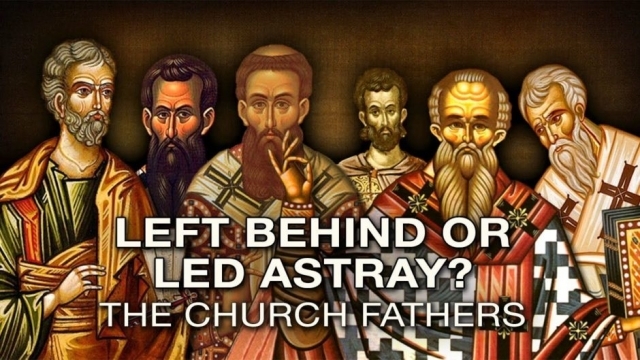Click to join the conversation with over 500,000 Pentecostal believers and scholars
Click to get our FREE MOBILE APP and stay connected
| PentecostalTheology.com



Apocalypse of Pseudo-Ephraem (known today as the Sermon at the end of the world) is a pseudoepigraphical text attributed to the church father Ephrem the Syrian.[1] Two distinct documents have survived—one in Syriac and one in Latin.[2] The Syriac document focuses on apocalyptic themes through the lens of Middle Eastern events which took place at the time it was written. Confusion exists around the Pseudo-Ephraem text primarily because of its doubtful authorship and date, differences between the Syriac and Latin versions, the small number of extant manuscripts, and the limited study that has been conducted of the text. Additionally, many extant works have been ascribed to Ephrem despite his authorship of these documents being doubtful. This has created significant difficulty in the area of textual criticism.
T. L. Frazier states, “Collections of works ascribed to Ephrem exist in several languages, the largest body of texts being Greek. Nearly all the surviving texts attributed to Ephrem in languages other than Syriac and Armenian are derived from this Greek corpus, including the Latin corpus.”[3]
• The Old Testament gives the promise of Christ’s coming.
• The Gospels unfold this coming in two comings.
• The Gospels unfold the first coming as a series of events, including the Virgin
conception, birth, perfect life, ministry, atoning death, resurrection, appearances,
and ascension.
• The Epistles unfold the second coming into two main phases; the rapture and the
revelation.
• The Book of Revelation unfolds these two phases into a series of events, separated
by 7 years (Dan 9:27). The first of these is the rapture, accompanied by the
resurrection, translation, judgement seat of Christ, and the marriage supper of the
Lamb. The second of these is the revelation, accompanied by Armageddon, the
millennial kingdom, and the white throne judgement
THE EARLY CHURCH
Since imminency is considered to be a crucial feature of pretribulationism by
scholars such as John Walvoord,1
it is significant that the Apostolic Fathers, though
posttribulational, at the same time just as clearly taught the pretribulational feature of
imminence. Since it was common in the early church to hold contradictory positions
without even an awareness of inconsistency, it would not be surprising to learn that
their era supports both views. Larry Crutchfield notes, “This belief in the imminent
return of Christ within the context of ongoing persecution has prompted us to broadly
label the views of the earliest fathers, ‘imminent intratribulationism.’”2
Expressions of imminency abound in the Apostolic Fathers. Clement of Rome,
Ignatius of Antioch, The Didache, The Epistle of Barnabas, and The Shepherd of Hermas all
speak of imminency.3
Furthermore, The Shepherd of Hermas speaks of the
pretribulational concept of escaping the tribulation.
You have escaped from great tribulation on account of your faith, and
because you did not doubt in the presence of such a beast. Go, therefore, and
tell the elect of the Lord His mighty deeds, and say to them that this beast is a
type of the great tribulation that is coming. If then ye prepare yourselves,
and repent with all your heart, and turn to the Lord, it will be possible for
you to escape it, if your heart be pure and spotless, and ye spend the rest of
the days of your life in serving the Lord blamelessly.4
Evidence of pretribulationism surfaces during the early medieval period in a sermon
some attribute to Ephraem the Syrian, but more likely the product of one scholars call
Pseudo-Ephraem, entitled Sermon on The Last Times, The Antichrist, and The End of the
World.
5
The sermon was written some time between the fourth and sixth century. The
rapture statement reads as follows:
Why therefore do we not reject every care of earthly actions and prepare
ourselves for the meeting of the Lord Christ, so that he may draw us from
the confusion, which overwhelms all the world? . . . For all the saints and
elect of God are gathered, prior to the tribulation that is to come, and are
taken to the Lord lest they see the confusion that is to overwhelm the world
because of our sins.
This statement evidences a clear belief that all Christians will escape the tribulation
through a gathering to the Lord and is stated early in the sermon. How else can this be
understood other than as pretribulational? The later second coming of Christ to the
earth with the saints is mentioned at the end of the sermon.
THE EARLY CHURCH
Since imminency is considered to be a crucial feature of pretribulationism by
scholars such as John Walvoord,1
it is significant that the Apostolic Fathers, though
posttribulational, at the same time just as clearly taught the pretribulational feature of
imminence. Since it was common in the early church to hold contradictory positions
without even an awareness of inconsistency, it would not be surprising to learn that
their era supports both views. Larry Crutchfield notes, “This belief in the imminent
return of Christ within the context of ongoing persecution has prompted us to broadly
label the views of the earliest fathers, ‘imminent intratribulationism.’”2
Expressions of imminency abound in the Apostolic Fathers. Clement of Rome,
Ignatius of Antioch, The Didache, The Epistle of Barnabas, and The Shepherd of Hermas all
speak of imminency.3
Furthermore, The Shepherd of Hermas speaks of the
pretribulational concept of escaping the tribulation.
You have escaped from great tribulation on account of your faith, and
because you did not doubt in the presence of such a beast. Go, therefore, and
tell the elect of the Lord His mighty deeds, and say to them that this beast is a
type of the great tribulation that is coming. If then ye prepare yourselves,
and repent with all your heart, and turn to the Lord, it will be possible for
you to escape it, if your heart be pure and spotless, and ye spend the rest of
the days of your life in serving the Lord blamelessly.4
Evidence of pretribulationism surfaces during the early medieval period in a sermon
some attribute to Ephraem the Syrian, but more likely the product of one scholars call
Pseudo-Ephraem, entitled Sermon on The Last Times, The Antichrist, and The End of the
World.
5
The sermon was written some time between the fourth and sixth century. The
rapture statement reads as follows:
Why therefore do we not reject every care of earthly actions and prepare
ourselves for the meeting of the Lord Christ, so that he may draw us from
the confusion, which overwhelms all the world? . . . For all the saints and
elect of God are gathered, prior to the tribulation that is to come, and are
taken to the Lord lest they see the confusion that is to overwhelm the world
because of our sins.
This statement evidences a clear belief that all Christians will escape the tribulation
through a gathering to the Lord and is stated early in the sermon. How else can this be
understood other than as pretribulational? The later second coming of Christ to the
earth with the saints is mentioned at the end of the sermon.




Most Talked About Today